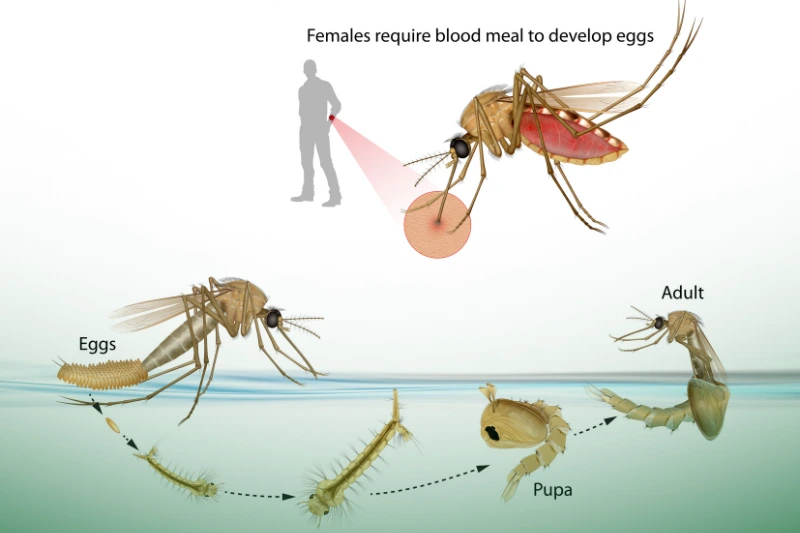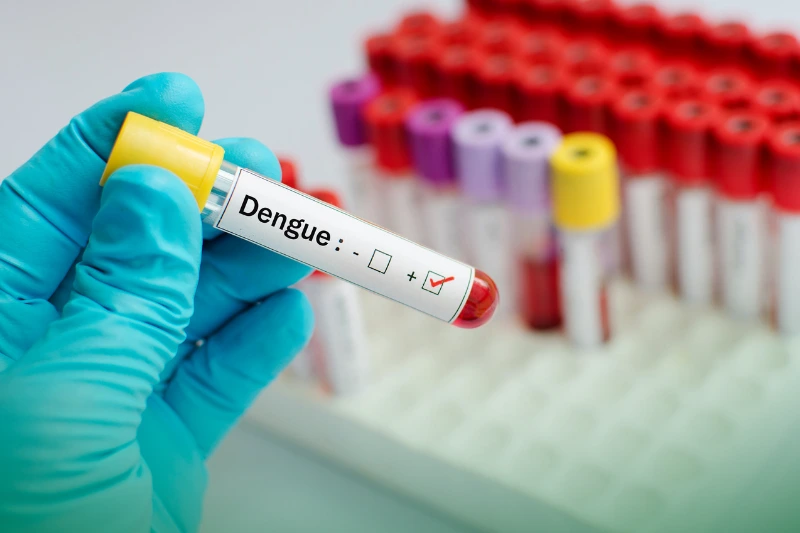
Mosquitoes in the PH Understanding Local Species and Risks
Last updated on May 10th, 2025 at 01:37 pm
Are you here to know more about the mosquitoes in the Philippines? Well, mosquitoes are insects that can be found in most parts of the world. About 3,500 species have been identified so far—some do not bite humans or animals, but others cause itchy bumps after a person has been bitten.
Mosquitoes act as vectors, spreading the pathogens they’ve picked up from one animal or human to another. These illnesses and mosquito-borne diseases can include viruses, parasites—dengue, malaria, and many more.
It’s important to note that not all mosquito species are vectors. Certain mosquitoes, referred to as nuisance mosquitoes, may bite but do not transmit germs, primarily causing annoyance rather than posing a health risk.
In this blog post, we will dive into the fascinating world of mosquitoes, exploring their biology, behavior, and the diseases they transmit. We’ll also equip you with practical knowledge on mosquito control and personal protection measures, empowering you to safeguard yourself and your loved ones from these relentless invaders. So, let’s unravel the secrets of these tiny yet formidable creatures and take a stand against the risks they pose.
Overview of Mosquitoes
Physical Characteristics

Mosquitoes are small insects belonging to the order Diptera and the family Culicidae. They have distinct physical characteristics that set them apart from other insects. On average, mosquitoes measure about 0.12 to 0.35 inches (3 to 9 millimeters) in length. Their bodies are slender and covered in scales, giving them a gray or brown appearance. Additionally, mosquitoes have long, needle-like mouthparts called proboscis, which they use to feed on the blood of humans and animals.
Lifespan and Reproductive Cycle

Understanding the lifespan and reproductive cycle of mosquitoes is essential in combating their population. Typically, the lifespan of an adult mosquito ranges from a few weeks to several months, depending on the species and environmental conditions. However, males generally have a shorter lifespan compared to females.
The reproductive cycle of mosquitoes consists of four stages: egg, larva, pupa, and adult. After a female mosquito takes a blood meal, she lays her eggs on or near water sources. The eggs hatch into larvae, commonly known as wigglers, which live in water and feed on organic matter. Larvae then transform into pupae, also known as tumblers, during which they undergo metamorphosis. Finally, adult mosquitoes emerge from the pupae, ready to continue their life cycle.
Species of Mosquitoes in the Philippines
The Philippines is home to several species of mosquitoes in the Philippines, some of which are more prevalent and have a higher potential for disease transmission. These include:
1. Aedes aegypti is the primary vector for diseases like dengue fever, chikungunya, and Zika virus. Aedes aegypti mosquitoes are small and dark-colored, with distinctive white markings on their legs and body.
2. Anopheles mosquitoes are the primary carriers of malaria, a life-threatening disease. They are often characterized by their long, slender bodies and paler coloration.
3. Culex mosquitoes are commonly found in urban and rural areas. While they can transmit diseases such as West Nile virus and filariasis, they are known to be more bothersome due to their nocturnal biting habits. Culex mosquitoes are typically brown in color with long, thin legs.
By understanding the different mosquito species and their characteristics, we can better tailor our efforts towards mosquito control and prevention, ultimately reducing the risks they pose to our health and well-being.
Mosquito-Borne Diseases
Mosquitoes are not just bothersome insects; they are also notorious vectors of various diseases. Understanding these mosquito-borne diseases is crucial for safeguarding our health and taking appropriate preventive measures. Let’s delve into some of the most common diseases transmitted by mosquitoes:
Diseases Transmitted by Mosquitoes
Dengue Fever
- Dengue fever is a viral illness caused by the dengue virus, primarily transmitted by the Aedes aegypti mosquito.
- Symptoms: High fever, severe headache, joint and muscle pain, rash, and fatigue.
- Treatment: Supportive care, such as rest, hydration, and pain relief. Severe cases may require hospitalization.
- Prevention: Eliminate mosquito breeding sites, use mosquito repellents, wear protective clothing, and install screens or nets.
Malaria
- Malaria is a life-threatening disease caused by the Plasmodium parasite, transmitted through the bite of infected Anopheles mosquitoes.
- Symptoms: Recurrent high fever, chills, sweats, headache, body aches, and fatigue.
- Treatment: Antimalarial medications prescribed by healthcare professionals.
- Prevention: Use mosquito nets while sleeping, apply insect repellents, and take antimalarial medication when traveling to malaria-endemic areas.
Zika Virus
- The Zika virus is a viral infection primarily transmitted by the Aedes mosquitoes, including Aedes aegypti.
- Symptoms: Mild fever, rash, joint pain, conjunctivitis (red eyes), muscle pain, and headache. In pregnant women, Zika virus infection can cause birth defects.
- Treatment: Supportive care for symptoms. Pregnant women should seek immediate medical attention.
- Prevention: Eliminate mosquito breeding sites, use mosquito repellents, wear protective clothing, and practice safe sexual practices to prevent sexual transmission.
Chikungunya
- Chikungunya is a viral disease transmitted by Aedes mosquitoes.
- Symptoms: High fever, severe joint pain, headache, muscle pain, rash, and fatigue.
- Treatment: Supportive care, including rest, hydration, and pain relievers.
- Prevention: Similar to dengue prevention measures, such as eliminating breeding sites and protecting against mosquito bites.
Symptoms, Treatment, and Prevention Measures:

Each mosquito-borne disease presents unique symptoms, treatment approaches, and preventive measures. It is essential to consult healthcare professionals for accurate diagnosis, management, and guidance. Additionally, preventive measures, including mosquito control, using plants that repel mosquitoes or other insect repellents, wearing protective clothing, and practicing good hygiene, can significantly reduce the risk of mosquito-borne diseases.
Remember, early detection, prompt medical attention, and effective prevention strategies play pivotal roles in combating mosquito-borne diseases and protecting ourselves and our communities.
Key Facts about Mosquitoes
1. Mosquitoes can be found both indoors and outdoors, making them a potential nuisance and health risk at any time of day.
2. Adult mosquitoes typically live for about 2 to 4 weeks. Certain species, environmental conditions and other factors can influence longevity in either sex of mosquito.
3. Only female mosquitoes require a blood meal to reproduce. After obtaining the needed nutrients, a female mosquito can lay eggs.
4. When a mosquito bites an infected individual or animal, it can become a carrier of germs such as viruses and parasites. This transmission can lead to outbreaks within communities—highlighting the importance of preventive measures.
Understanding the nature and behavior of mosquitoes helps us appreciate the potential risks they pose and enables us to take appropriate steps to protect ourselves and our families from mosquito-borne diseases.
Note: It’s important to stay informed about specific mosquito species and any updates or recommendations from your local health authorities or barangays as mosquito populations and disease prevalence can vary based on geographical locations.
Conclusion
In this blog post, we have explored the fascinating world of mosquitoes and the significant impact they have on our health and well-being. Let’s recap the key points discussed:
- Mosquitoes are small insects that can transmit dangerous diseases, making them one of the deadliest creatures on the planet.
- Understanding the physical characteristics, lifespan, and reproductive cycle of mosquitoes helps in implementing effective control measures.
- Different mosquito species, such as Aedes aegypti, Anopheles spp., and Culex spp., are commonly found in the Philippines, each with their own potential for disease transmission.
- Mosquitoes can transmit diseases like dengue fever, malaria, Zika virus, and chikungunya, causing a range of symptoms and requiring specific treatment approaches.
- Taking preventive measures, including mosquito control, using repellents, eliminating breeding sites, and practicing personal protection, is essential in reducing the risks associated with mosquito-borne diseases.
It is crucial to reinforce the importance of mosquito control and prevention for the well-being of individuals and communities. By actively engaging in mosquito control efforts and adopting preventive measures, we can significantly reduce the spread of diseases and create safer environments for ourselves and those around us.
In conclusion, let us take a proactive stance against mosquitoes and their potential threats. We encourage you to take the following simple steps:
- Remove standing water: Regularly inspect your surroundings and eliminate any sources of standing water where mosquitoes breed, such as flower pots, water containers, and gutters.
- Use mosquito repellents: Apply mosquito repellents containing DEET, picaridin, or other recommended ingredients to exposed skin when outdoors.
- Wear protective clothing: Cover up with long sleeves, pants, and socks to minimize exposed skin and reduce the chances of mosquito bites.
- Install protective measures: Use window screens, bed nets, and door sweeps to create barriers and keep mosquitoes out of living spaces.
- Stay informed: Stay updated on mosquito-related news, local health advisories, and recommended prevention strategies from reputable sources.
By taking these simple yet crucial steps, we can actively contribute to reducing the risks associated with mosquitoes and safeguarding the well-being of ourselves, our families, and our communities.
Together, let’s create a mosquito-free environment and promote healthier, happier lives for everyone. Contact Environet Pest Control today!
